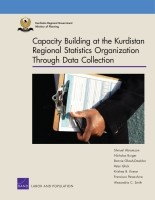| 来源类型 | Research Reports
|
| 规范类型 | 报告
|
| ISBN | 9780833085177
|
| 来源ID | RR-293-KRG
|
| Capacity Building at the Kurdistan Region Statistics Office Through Data Collection |
| Shmuel Abramzon; Nicholas Burger; Bonnie Ghosh-Dastidar; Peter Glick; Krishna B. Kumar; Francisco Perez-Arce; Alexandria Smith
|
| 发表日期 | 2014
|
| 出版者 | RAND Corporation
|
| 出版年 | 2014
|
| 页码 | 96
|
| 语种 | 英语
|
| 结论 |
Labor Force Participation in the Kurdistan Region of Iraq (KRI) Is Low- Overall, just 38 percent of adults age 15 and older participate in the KRI labor force, with very low female participation driving the overall rate. This percentage is essentially the same in Jordan but is significantly lower in Turkey (~50 percent) and Egypt (~48 percent). Nearly 66 percent of men 15 years and older are in the labor force. However, only about 38 percent of males aged 15–24 are in the labor force, largely because many are still studying. Only about 6 percent of female youth participate.
The Unemployment Rate Compares Favorably with Most of the Middle East- At 7.4 percent, the unemployment rate is not low but compares favorably with most countries of the Middle East region. The rate differs significantly between men (5.0 percent) and women (19.9 percent).
- Youth unemployment (ages 15–24) in the KRI is 17.6 percent, significantly higher than for the entire labor force. However, as with unemployment overall, youth unemployment in the KRI is among the lowest in the region. In the KRI, the unemployment rate for female youth is very high, at 48.9 percent, compared to 12.8 percent for young men.
- Public sector employment plays a dominant role in the economy, accounting for about half of all jobs. 51.4 percent of employment in the KRI can be characterized as being in the formal sector. The vast majority of working women are in the formal sector, almost all in the public sector.
|
| 摘要 |
- Conduct the KRLFS every quarter. Conducting the KRLFS every three months will provide policymakers and the public with up-to-date indicators on the labor force. This routine data collection also conforms to best practices for labor force surveys across the world and will enhance KRSO capabilities through repeated implementation.
- Continue to build capacity by collecting firm-level data as well, perhaps to calculate the Gross Regional Product (GRP). GRP is the key measure of economic output of the region; hence, it is an essential indicator for policy. RAND will work with the KRSO to use existing data and collect new data, as needed, to achieve this aim. The KRG will need to collect new surveys, as well as using existing surveys and other data sources, to accurately calculate the GRP. RAND can continue to work with and build the capacity of the KRSO via workshops and communication on data collection, analysis, and reporting on this and other critical topics.
|
| 主题 | Employment and Unemployment
; The Kurdistan Region - Iraq
; Labor Markets
; Survey Research Methodology
|
| URL | https://www.rand.org/pubs/research_reports/RR293.html
|
| 来源智库 | RAND Corporation (United States)
|
| 资源类型 | 智库出版物
|
| 条目标识符 | http://119.78.100.153/handle/2XGU8XDN/107694
|
推荐引用方式
GB/T 7714 |
Shmuel Abramzon,Nicholas Burger,Bonnie Ghosh-Dastidar,et al. Capacity Building at the Kurdistan Region Statistics Office Through Data Collection. 2014.
|
|
文件名:
|
x1495315144996.jpg
|
|
格式:
|
JPEG
|

|
文件名:
|
RAND_RR293.pdf
|
|
格式:
|
Adobe PDF
|
除非特别说明,本系统中所有内容都受版权保护,并保留所有权利。